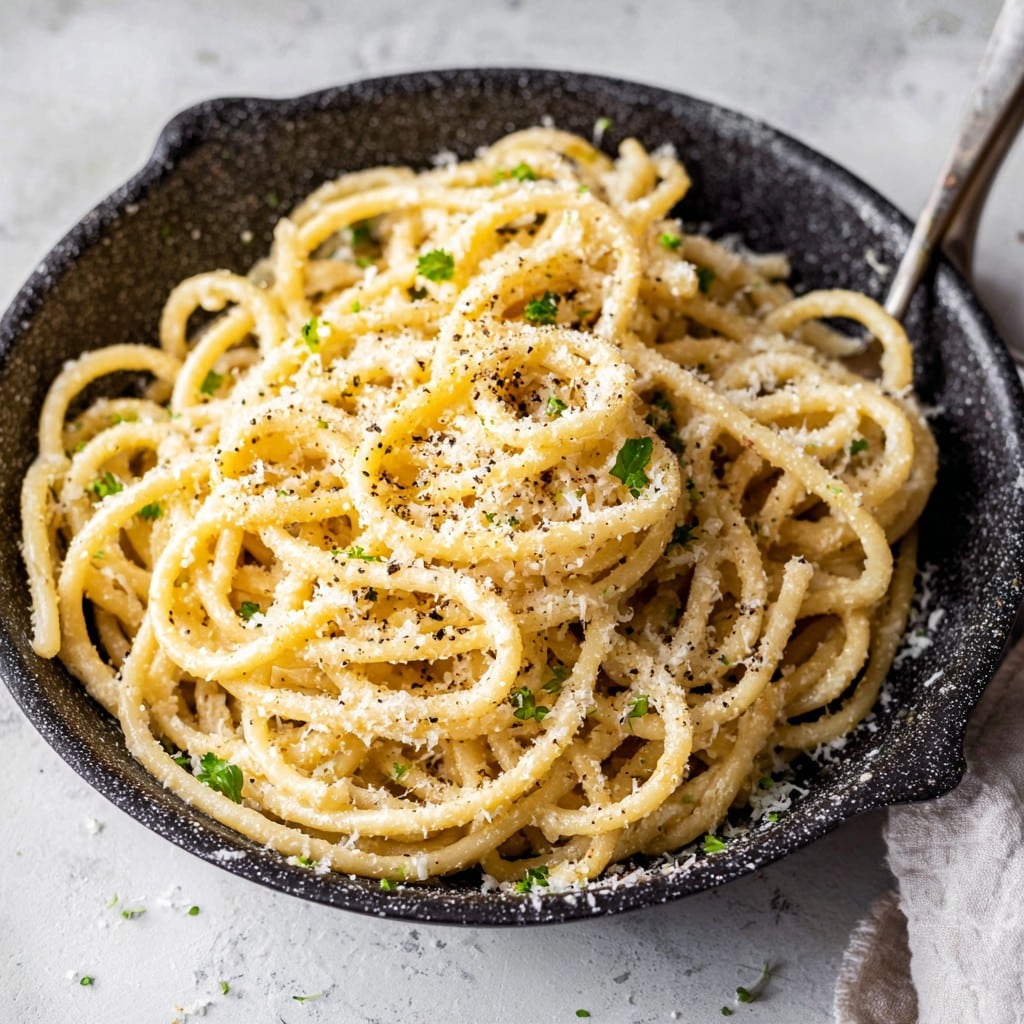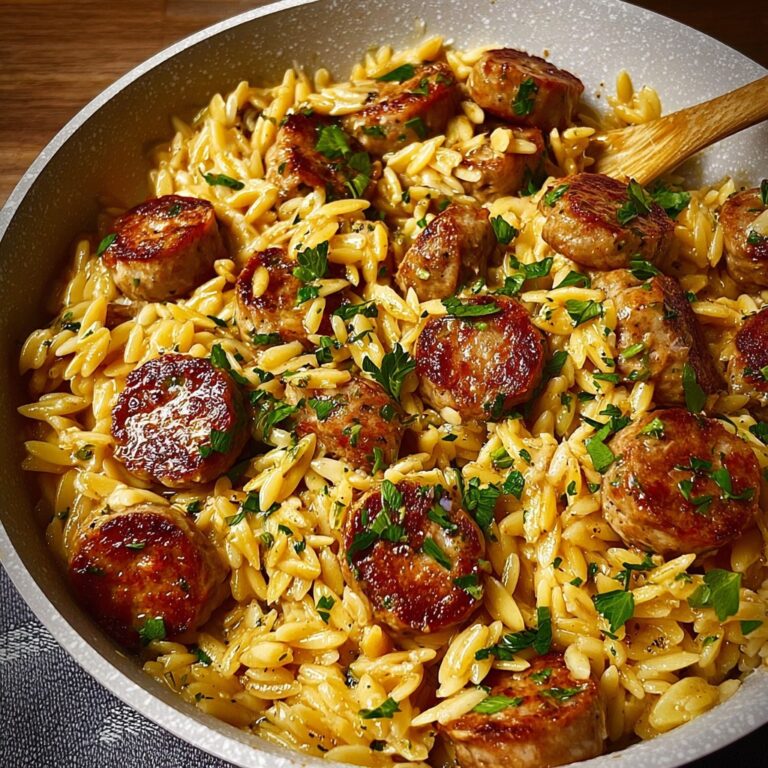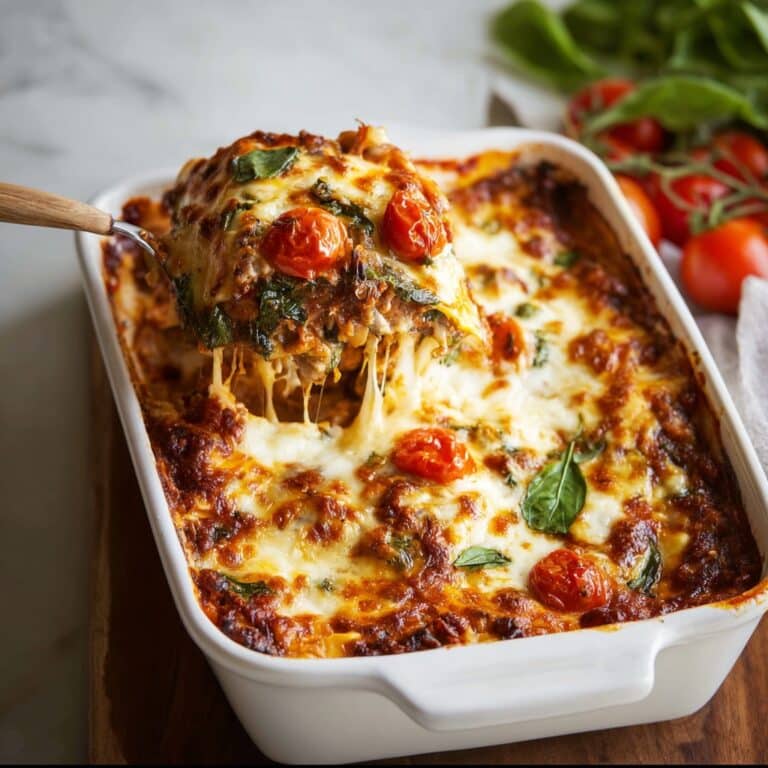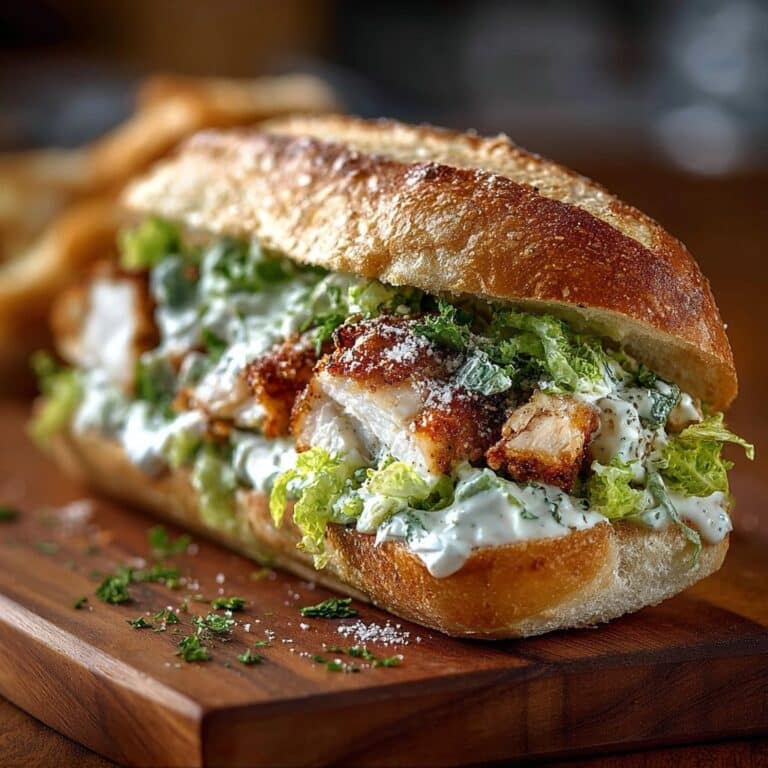Bucatini Cacio E Pepe: A Cheeky, Cozy Pasta Night Recipe
Why I Never Say No to Bucatini Cacio E Pepe
You know that thing where you finish work and all you want to do is flop on the couch (preferably in something resembling pajamas) and demolish a big bowl of pasta? Yeah, that’s what cacio e pepe is for me. I first made it after watching way too many episodes of an Italian cooking show—don’t ask me which, it might have even been that one hosted by a guy with suspiciously clean chef coats. Anyway, I remember burning the pepper on my first attempt (let’s just say everybody noticed). But honestly, after a few tries and a dash of stubbornness (some might say more than a dash), it’s now one of my favorite lazy-night saviors. If you can boil water and swipe cheese across a grater, you’re basically already halfway there. Also, who doesn’t like twirling pasta with a silly name?
Why You’ll Love This (And Maybe Ccurse Me For Showing You How Simple It Is)
I usually make cacio e pepe when my pantry is down to the weirdest odds and ends (like, why is there always one lone potato hanging out behind the flour?) or when it’s just too much effort to shop. My family goes wild for this because, apparently, anything with cheese turns small children into polite dinner guests. It comes together fast enough that I can start a show while I cook. (Pro tip: don’t try it during heavy drama. Stirring and crying don’t really mix, trust me.) Also, the ingredients are so few that you can actually remember them without a phone—miraculous.
The Ingredients (Because, Let’s Be Real, Half The Time I Substitute Something)
- 400g Bucatini pasta (spaghetti works, but bucatini’s got that wonderful chew)
- 1 1/2 cups freshly grated Pecorino Romano (Parmesan will do in a pinch, though my nonna rolls her eyes from afar)
- 2 to 3 teaspoons freshly cracked black pepper (I sometimes go heavy; my uncle once said this was a bold move. He was right)
- Coarse sea salt, for the pasta water
- Optional: a knob of unsalted butter (don’t let any purists see you—except it really makes it silkier)
- Bonus substitution: If I’m out of one cheese, I mix in a smidge of Grana Padano. Nobody’s died yet.
Here’s What I Actually Do (Don’t Worry About Getting It Perfect)
- Bring a large pot of salted water to a boil. Not a little bubble in the corner—like, properly rolling. You want enough water to let the pasta dance (I use, um, a generous amount, and I’ve read somewhere about 4 liters, but who’s counting?).
- Add the bucatini. Give it a stir, then wander off for a few minutes—but don’t actually wander off; it’ll stick at the worst moment if you do.
- Meanwhile: put your pepper (2 teaspoons or more, you daredevil) in a big, wide skillet over medium-low. Toast just until your kitchen starts smelling amazing, no more than a minute. Take it off the heat. This is the time I usually sneak a taste of cheese. Or three.
- Scoop out about a cup of pasta water (best super starchy towards the end), and set it aside. I always forget and have to fish pasta out with a slotted spoon later. Don’t be like me.
- When the pasta’s just al dente, grab some tongs and transfer it right into your peppery skillet. No need to drain—let a bit of water come along for the ride.
- Add about half a cup of pasta water to start, toss everything (sometimes with a fork, sometimes just swirling pan), then quickly scatter over your cheese, reserving a little bit for dramatic effect at the end.
- Now the fun: stir and swirl and look slightly frantic, adding a splash more water if it turns into cheese clumps (which, by the way, happens to me at least every third time; it’s not a crime). Butter goes in here, if you want to be cheeky.
- Once the sauce looks glossy (or glossy enough—don’t worry if it looks a little “rustic”), twirl onto plates and finish with that last little snow of cheese and a grind of pepper. Stand back and admire before demolishing.
Notes (The Real Kind—Not the Ones Chef-Types Write)
- Pasta water is liquid gold. But beware, too much and it just goes soupy. I’ve done this, wasn’t great. Actually, less is more—add it slowly.
- Don’t use pre-grated cheese, unless you’re in a real pinch (been there once, disaster). Something about those powdery fillers…
- One time I let it sit too long before eating; it got a bit gluey, but still tasty. So, you know, eat promptly.
If You Fancy Changing It Up (Or Want to Know What Not To Try)
- I’ve added a handful of frozen peas once. Not traditional, but kinda fresh and sweet—kids approved.
- Someone said lemon zest. I tried it. Didn’t love it, honestly. Maybe my lemons were off-duty.
- Tried whole wheat bucatini once. Texture was fine, but it needed a bit more salt. Not a fail, just different.
Equipment (But Here’s What to Do If You Don’t Have Everything)
- Big pot (my favorite is this old enamel one, but any will do)
- Large skillet or deep pan for tossing pasta—if you don’t have one big enough, just use the drained pasta pot. It’ll all be fine.
- Tongs—a fork works in a pinch, but you might chase noodles around like a cat batting at string
- Fine cheese grater. No microplane? Use whatever grater you have. Once I used a veggie peeler and just broke up the shavings by hand=worked out okay.

How It Keeps (Spoiler: It Never Lasts Long Enough to Test Much)
If you somehow have leftovers, pop them in an airtight container in the fridge for up to 2 days. I think it actually tastes a bit punchier the next day (though the noodles go a bit soft). That said, in my house it rarely makes it past breakfast—cold pasta, anyone? I’d give it a quick splash of water and a gentle reheat in a pan or even the microwave (cover it though, learned that the saucy way).
How I Like to Serve It (And a Quick Family Tradition)
We usually serve it straight from the pan, family style (less dishes, more time for arguing over who gets seconds). Sometimes I toss a fresh arugula salad on the side. My cousin likes to top his with a fried egg—looks mad, tastes awesome. Oh, and a glass of cheap-but-cheerful red wine never hurt anyone.
The Stuff I Wish I Knew Sooner (My Pro Tips—Learned the Fun Way)
- I once tried rushing the cheese addition—just dumped it in with wild enthusiasm. Regretted it. Clumpy city. Go slow, add water, keep things moving.
- I used cold cheese once. It refused to melt. Room temp makes everything smoother. Live and learn.
- Don’t do dishes while the pasta cooks. Seriously, by the time you get back, it’s mushy. I’ve read this discussion on Serious Eats that explains more, if you’re curious.
Wait, What If…
- Can I use gluten-free pasta?
- Absolutely! But I find it needs a bit (okay, a lot) more water for the sauce. Otherwise, it’s just as satisfying. Or you could try chickpea pasta for extra protein (it definitely tastes… different, but not in a bad way).
- Is butter really allowed?
- Traditionalists will frown, but I do it anyway. Makes it creamy. Don’t let anyone shame your pasta.
- How do I keep the cheese from clumping?
- Honestly, patience and plenty of tossing. I learned form this Bon Appetit guide. Also, grating cheese fine helps. Add water little by little; if it gets too thick, just splash in more. Besides, it usually tastes great even if it looks a bit… rustic.
- Is pre-ground pepper okay?
- I suppose it’ll work, but whole peppercorns cracked fresh really crank up the flavor. You’ll notice the difference—trust me.
Side note—one evening I tried making this for lunch guests while also arguing with my dog about the merits of staying off the table (he won). Point is, this pasta doesn’t mind a bit of distraction, and neither should you! Enjoy.
Ingredients
- 400 g bucatini pasta
- 1 1/2 cups Pecorino Romano cheese, finely grated
- 2 teaspoons freshly cracked black pepper, plus extra for garnish
- 3 tablespoons unsalted butter
- 1 tablespoon olive oil
- Salt, to taste
- 1/2 cup reserved pasta water
- Fresh parsley, finely chopped, for garnish (optional)
Instructions
-
1Bring a large pot of salted water to a boil. Add bucatini pasta and cook until al dente according to package instructions.
-
2While the pasta cooks, heat olive oil and butter in a large skillet over medium heat. Add freshly cracked black pepper and toast for about 1 minute until fragrant.
-
3Reserve 1/2 cup of the pasta cooking water. Drain the bucatini and add it directly to the skillet with the pepper.
-
4Reduce heat to low. Sprinkle in the Pecorino Romano cheese and pour in about 1/4 cup of reserved pasta water. Quickly toss and stir the pasta until a creamy sauce forms, adding more pasta water as needed to achieve the desired consistency.
-
5Season with salt to taste. Serve immediately, garnished with more Pecorino, freshly cracked black pepper, and parsley if desired.
Approximate Information for One Serving
Nutrition Disclaimers
Number of total servings shown is approximate. Actual number of servings will depend on your preferred portion sizes.
Nutritional values shown are general guidelines and reflect information for 1 serving using the ingredients listed, not including any optional ingredients. Actual macros may vary slightly depending on specific brands and types of ingredients used.
To determine the weight of one serving, prepare the recipe as instructed. Weigh the finished recipe, then divide the weight of the finished recipe (not including the weight of the container the food is in) by the desired number of servings. Result will be the weight of one serving.
Did you make this recipe?
Please consider Pinning it!!






